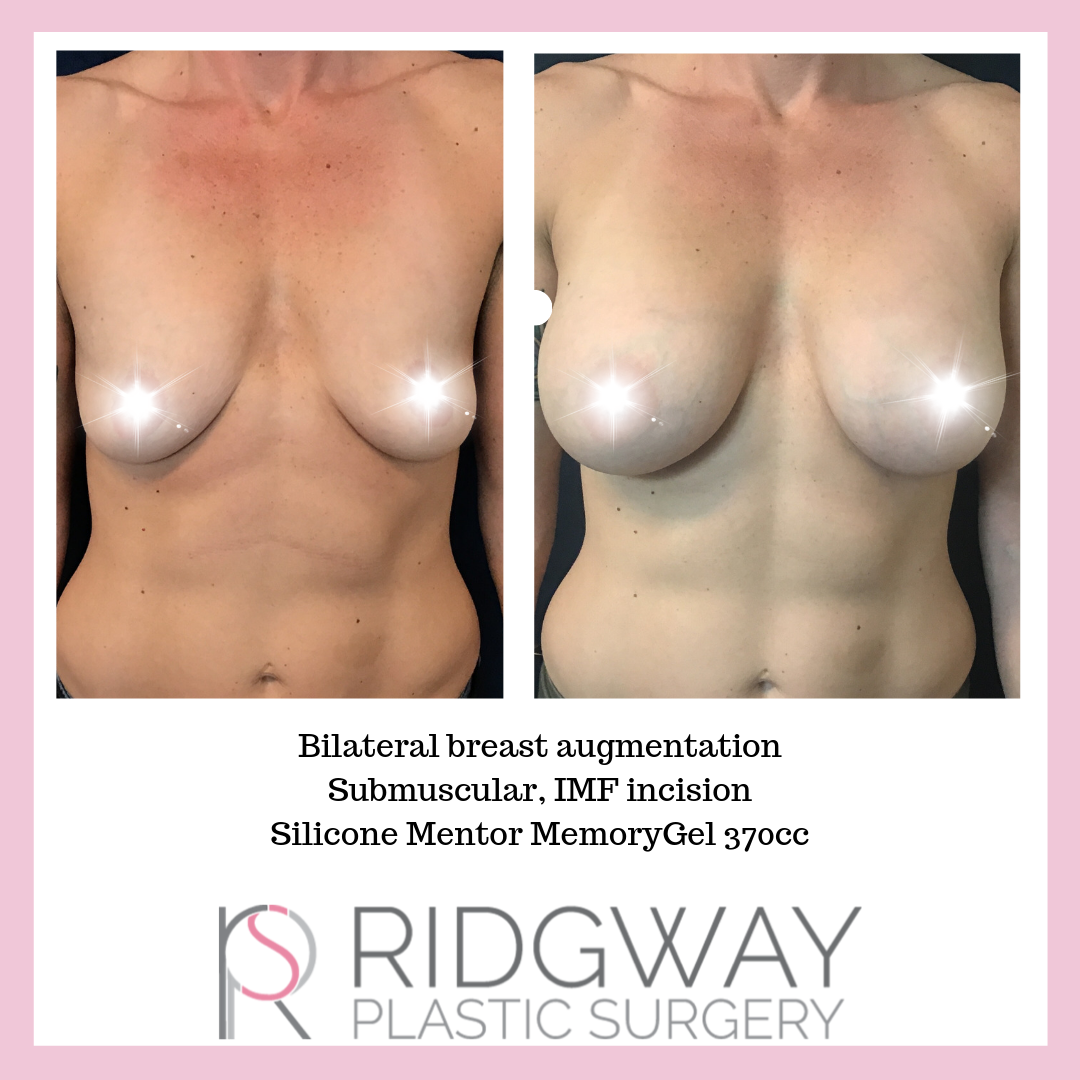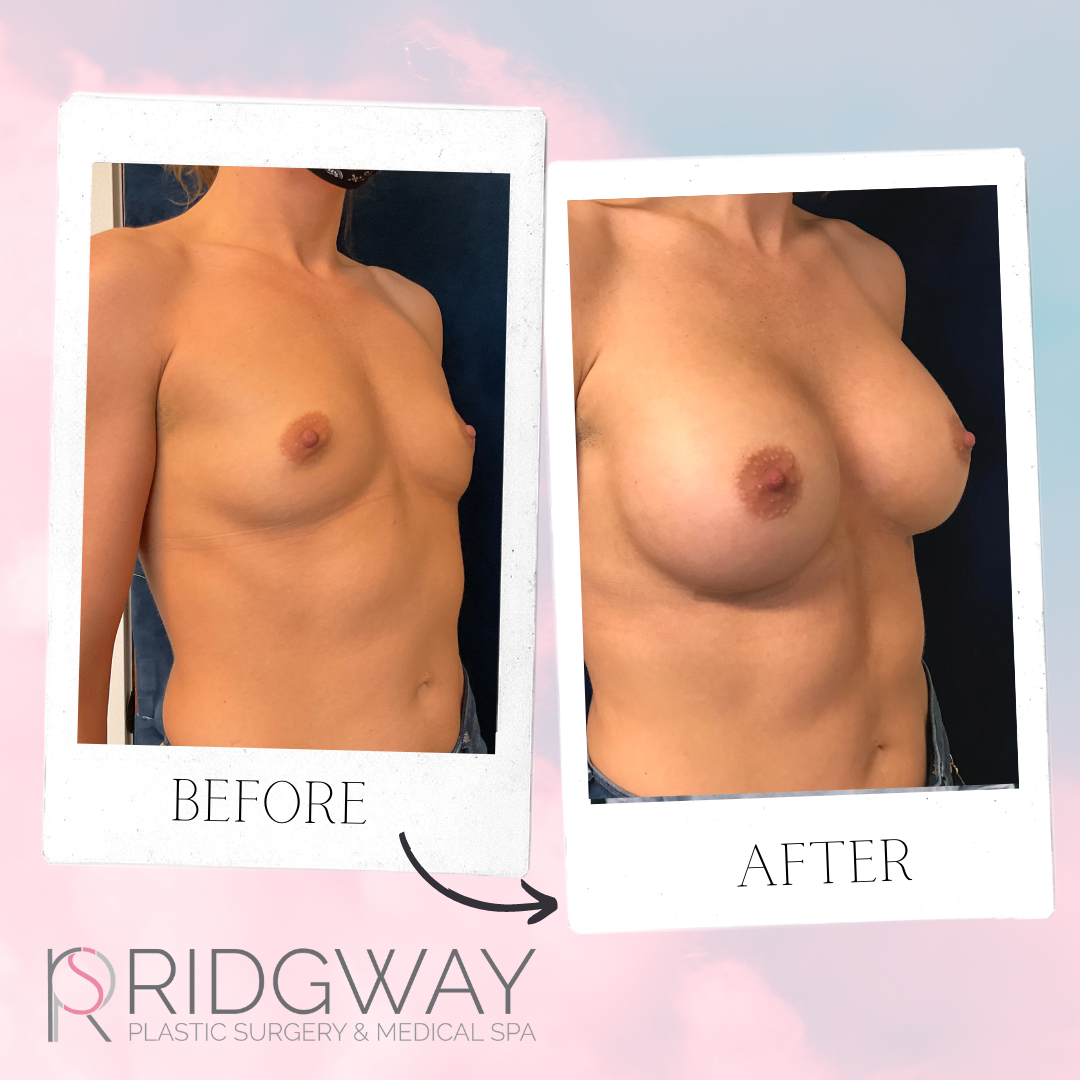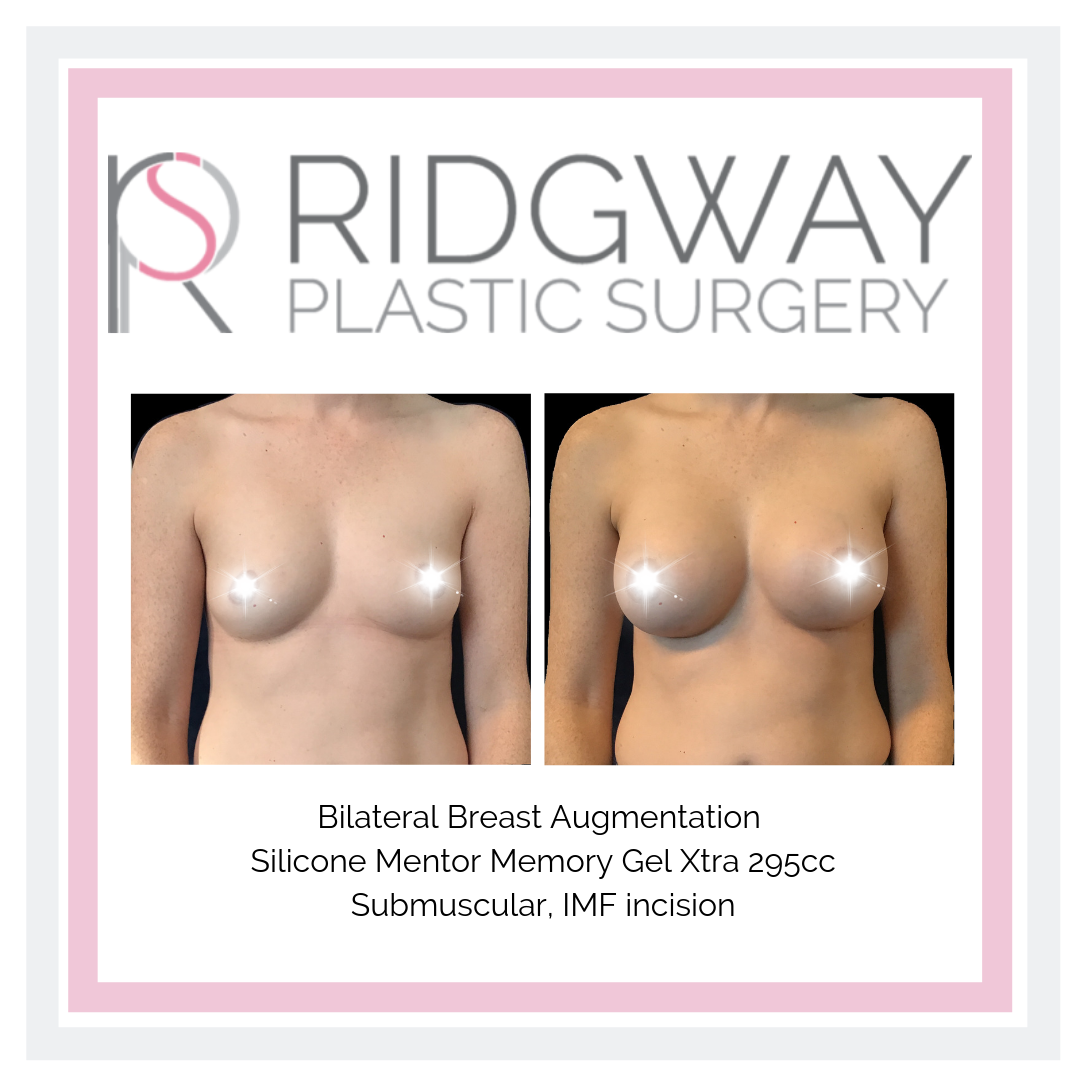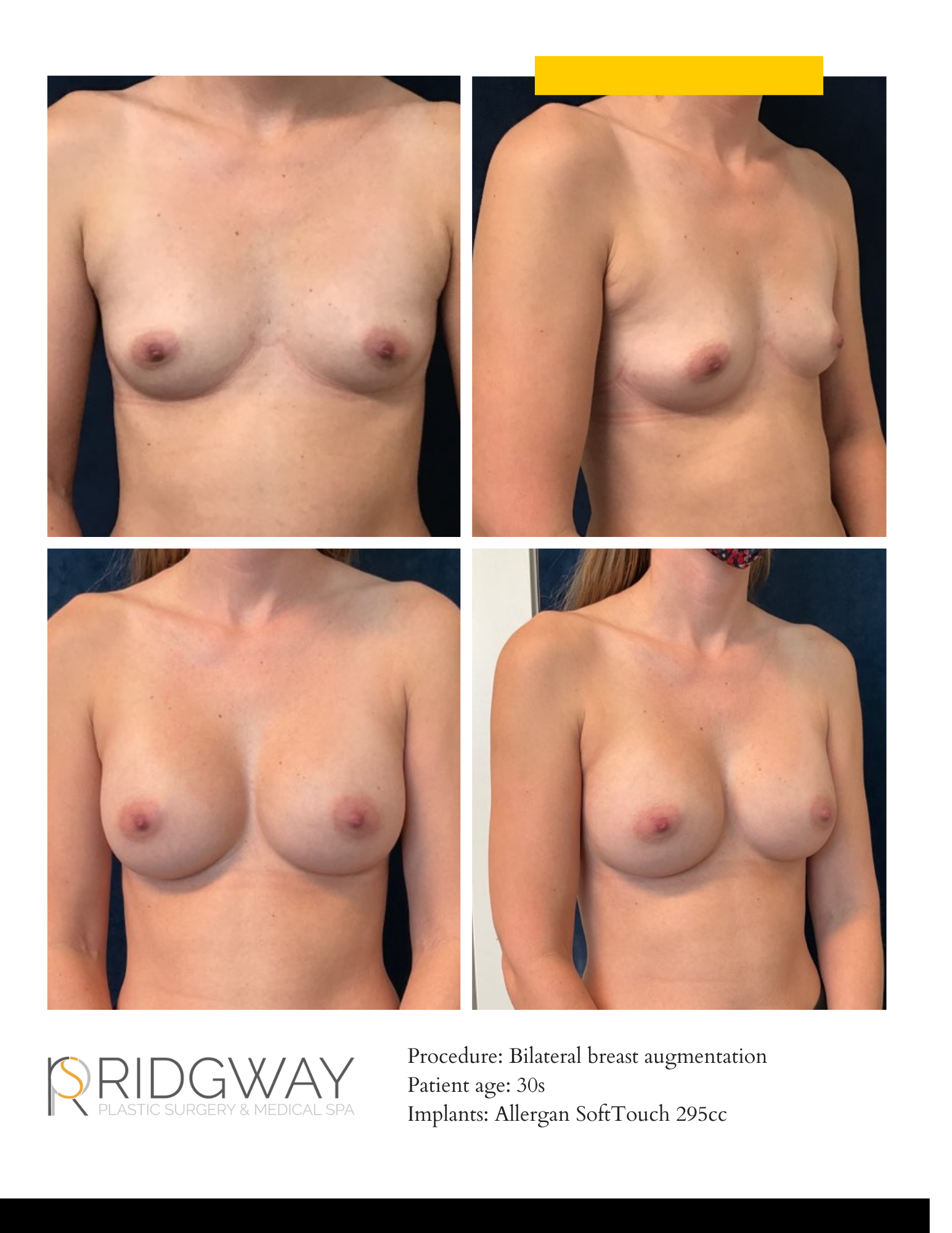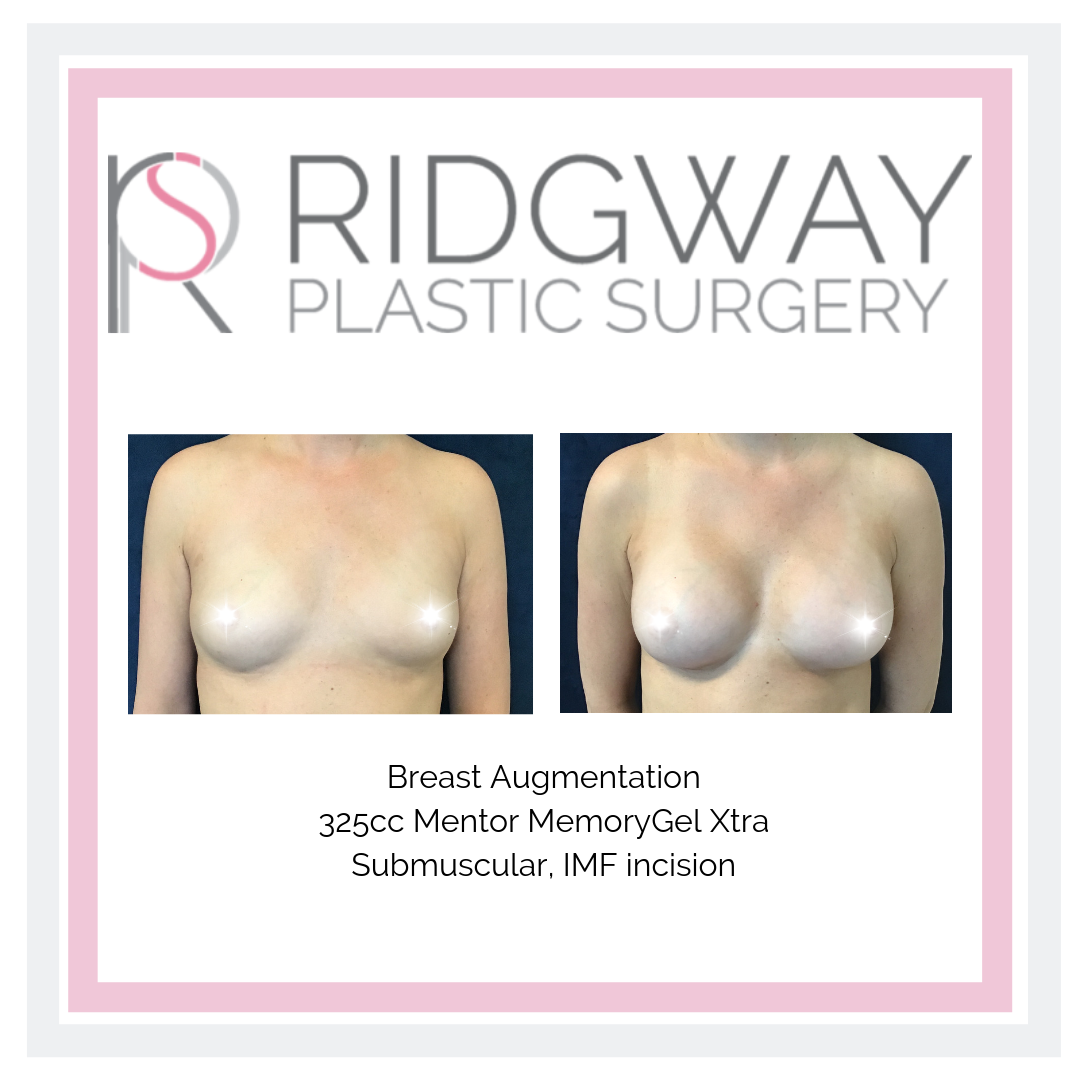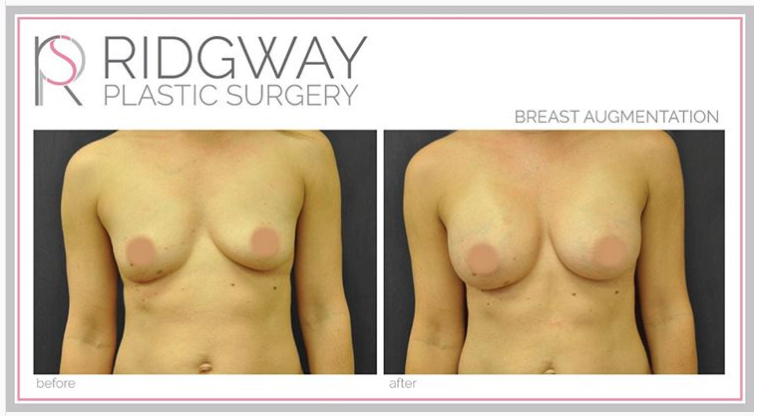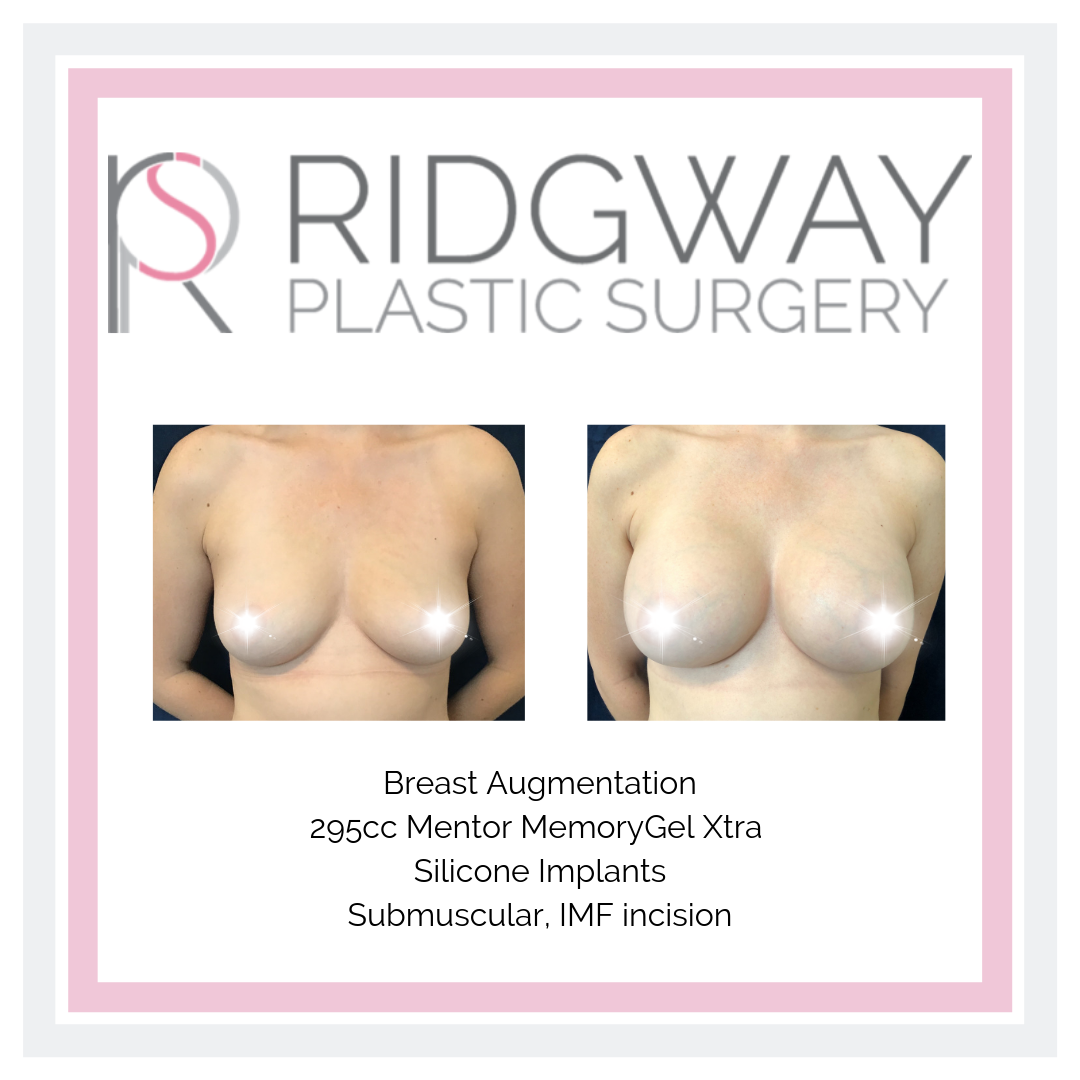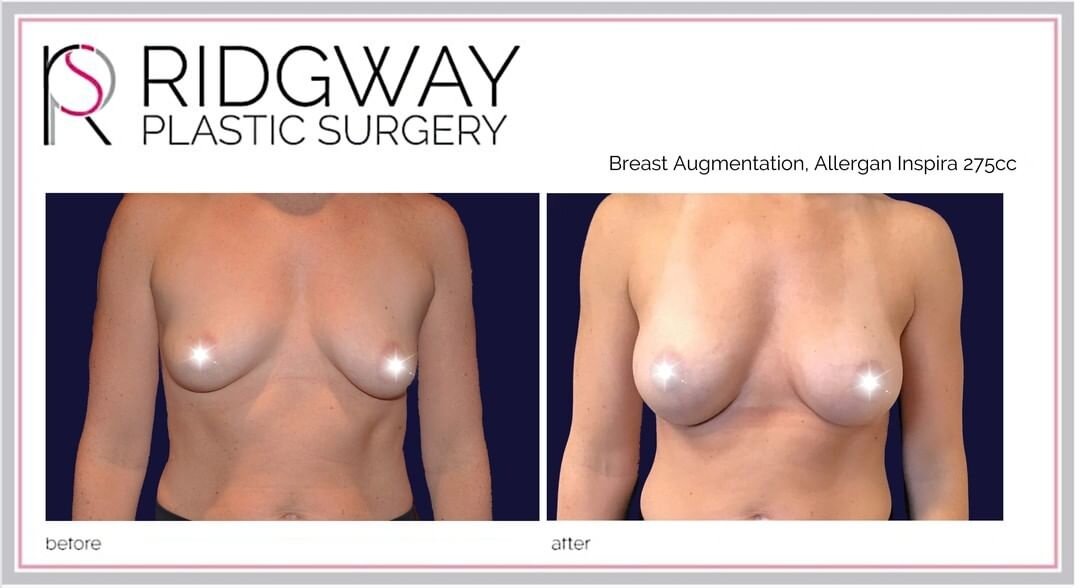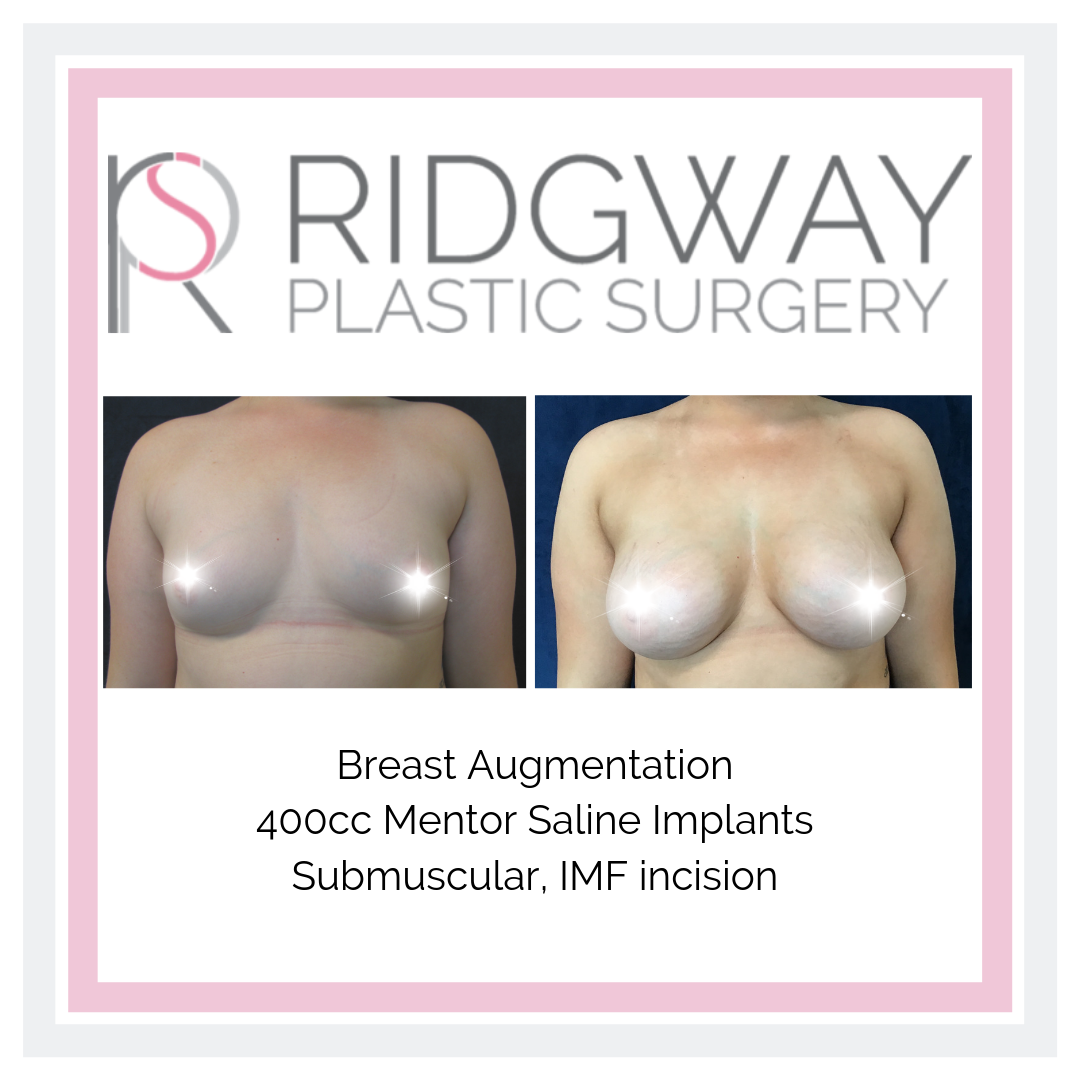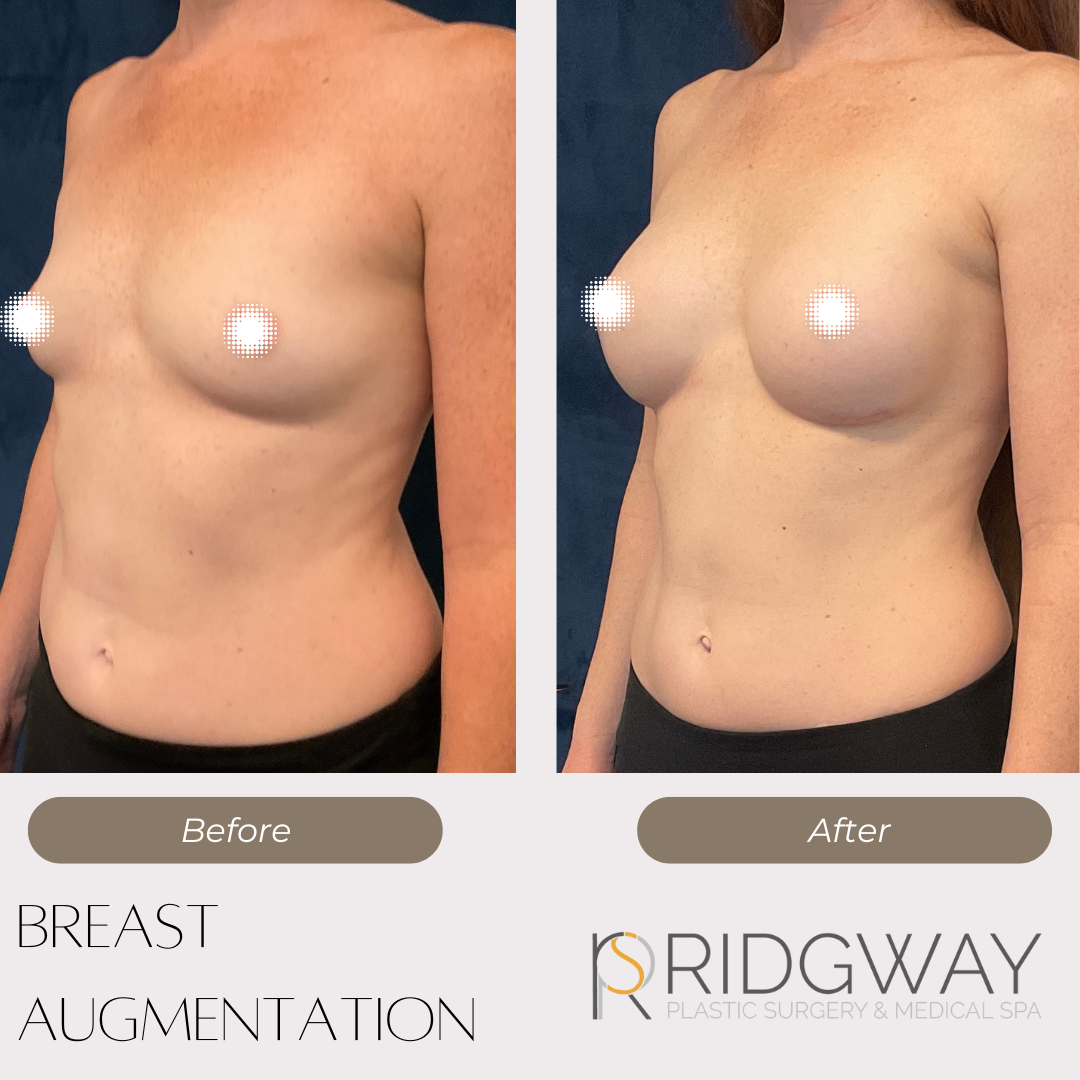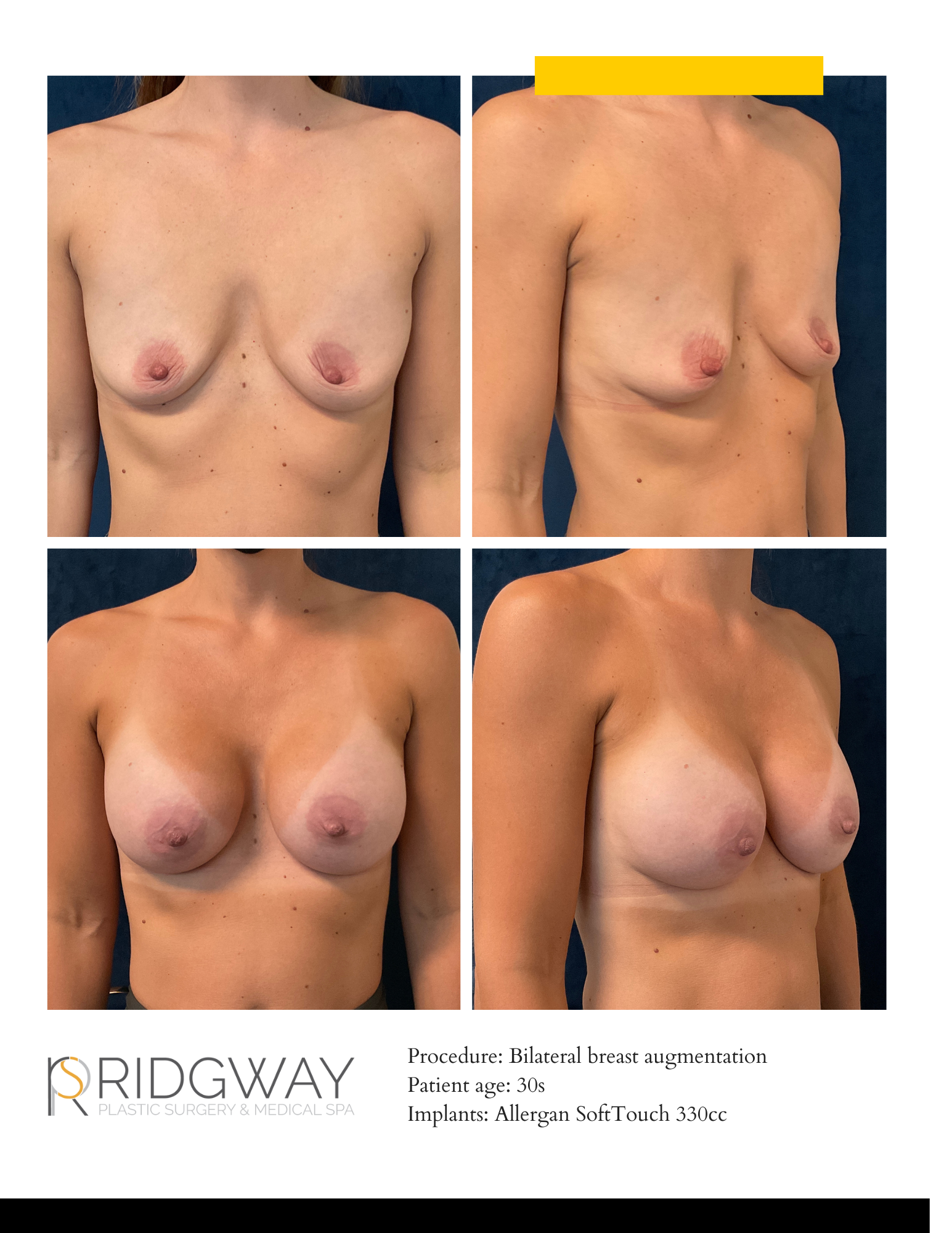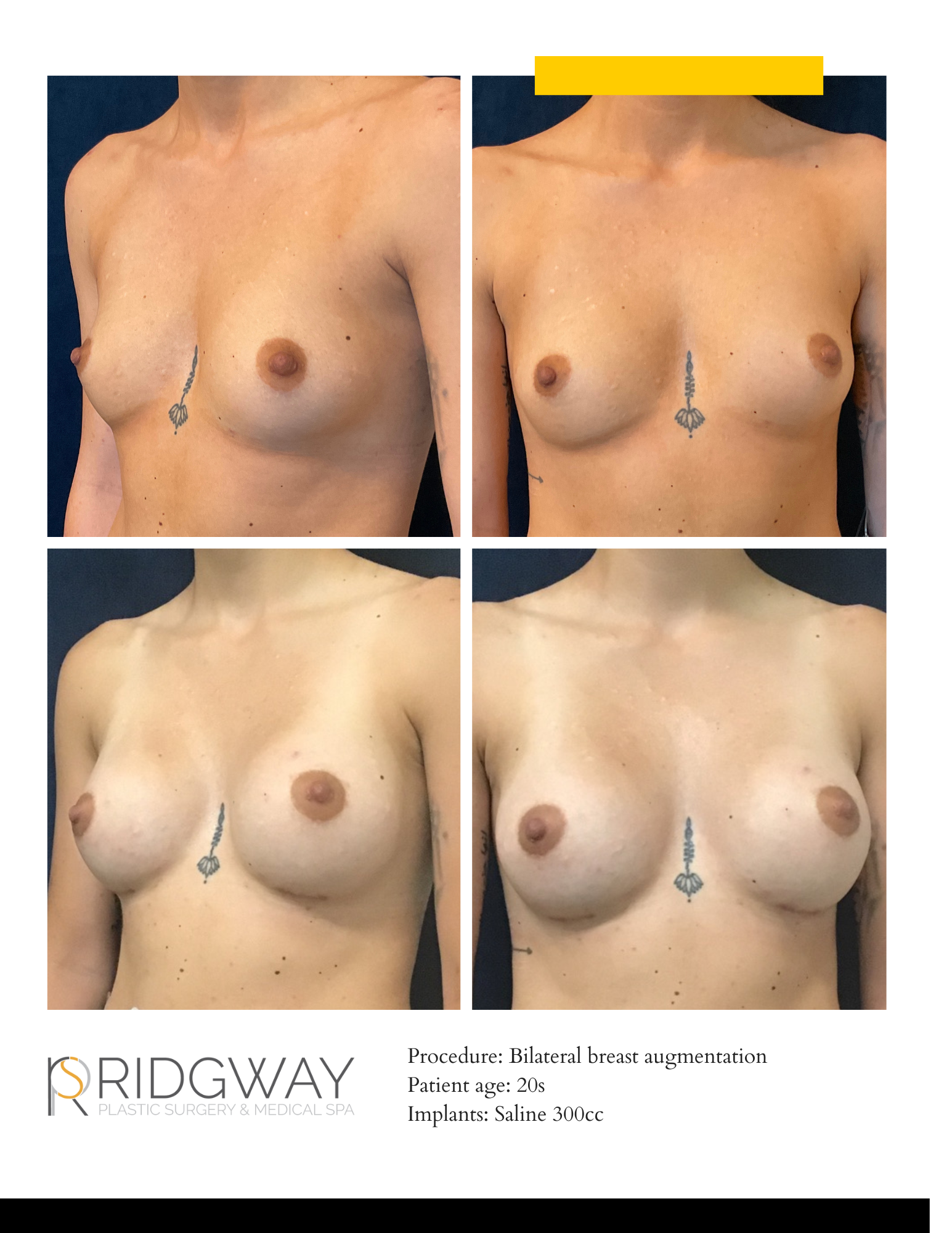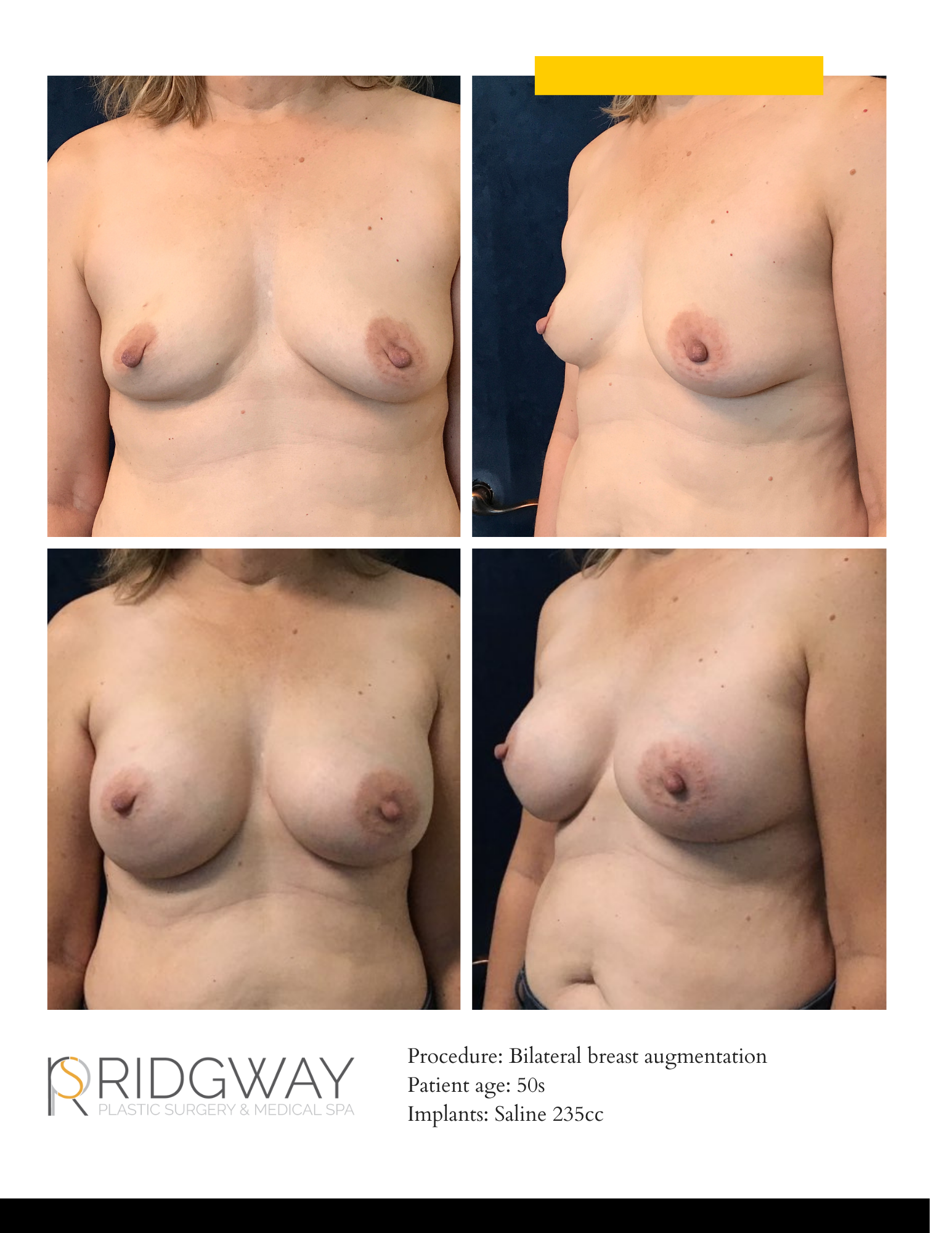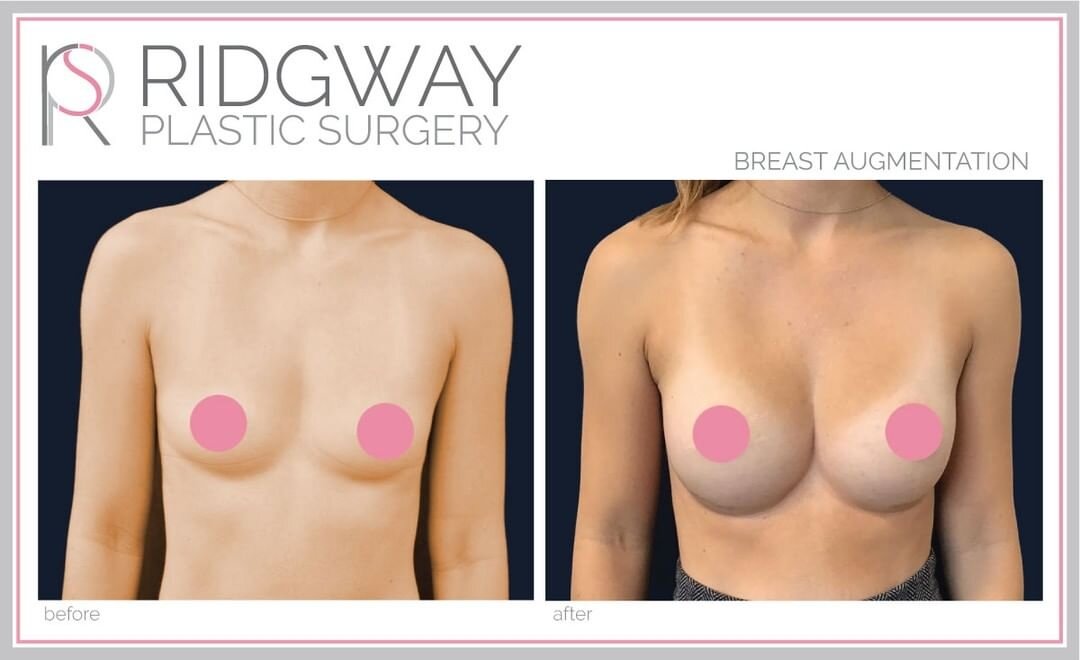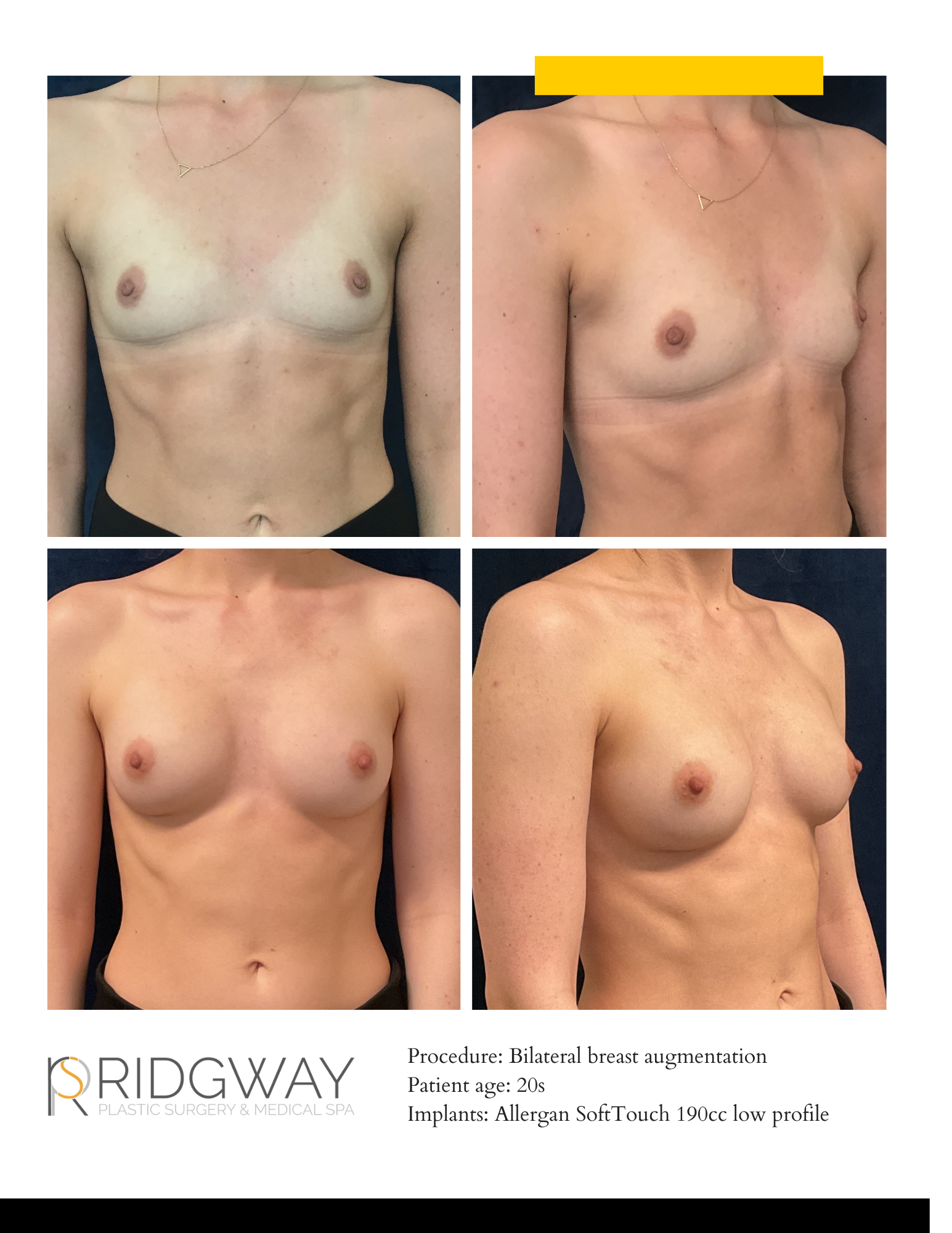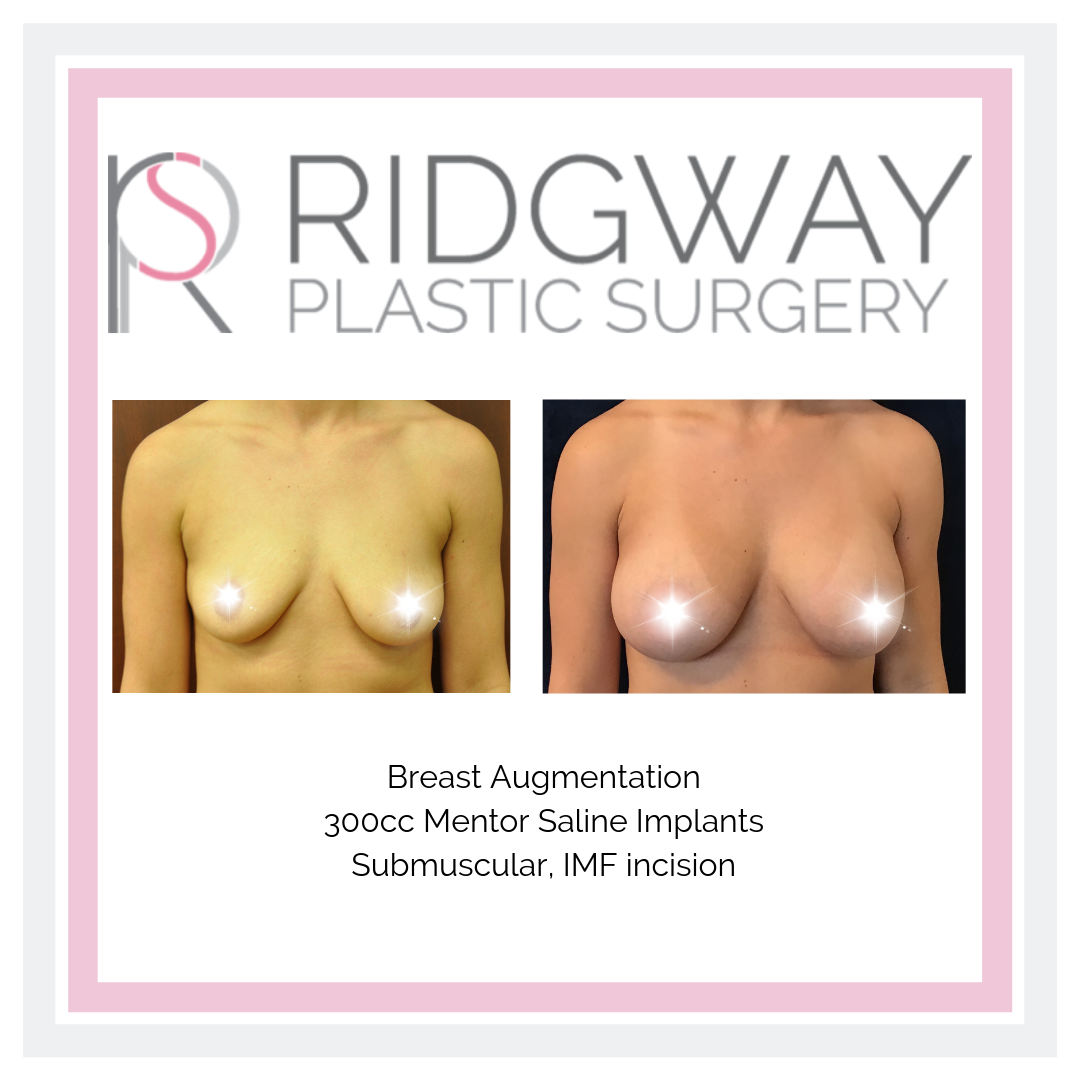What is Breast Augmentation?
Breast augmentation increases or restores breast size and shape. It is one of the nation’s most requested plastic surgery procedures. Depending on the size chosen, breast enhancement can give women a subtle adjustment or dramatic change. Whether you want to increase your cup size, regain your youthful shape lost after breastfeeding or major weight loss, or correct asymmetry, breast augmentation can offer beautiful and natural-looking results when performed by a skilled plastic surgeon.
Dr. Ridgway will spend time with you discussing your goals. No one implant size or type is right for everyone. An implant choice has to be tailored to each patients anatomy and their surgical aesthetic goals. She will help you find the right implant and surgery for you. She is known for her patience and good listening skills. Her artistic vision and precise surgical technique will help you achieve the most beautiful and natural-looking results.
Breast implant type, size and placement are all carefully considered for each patient, ensuring expectations are met if not surpassed.
Breast Implant Type
Saline implants come deflated and are filled with a sterile saltwater at the time of surgery. The outer shell is made of a smooth or textured silicone. Because they are deflated when inserted they are easier to insert though a smaller incision. They are adjustable in size on the OR table which can help improve symmetry.
While the scars are smaller, saline implants usually do not feel as natural as silicone implants, and tend to ripple more. This may be especially apparent in thin women with little breast tissue.
The FDA approved saline implants for breast enhancement surgery in women aged 18 and older, as well as for breast reconstruction in patients of any age. We offer saline implant choices from Allergan, and Mentor.
Silicone implants are pre-filled with a thick, silicone gel. They are generally softer and feel more natural than saline implants. For most patients, they prefer the feel and look of silicone implants. The gel gives a more natural sloping appearance to the upper breast and the implant edges may be more difficult to detect visually or by touch. Because silicone implants are already pre-filled, they do require a slightly larger incision.
Allergen, Mentor, and Sientra manufacture silicone implants that are approved by the FDA for breast augmentation in women aged 22 and older. The FDA recommends that patients with silicone implants get regular breast MRIs to ensure the shell has not ruptured. These MRIs may not be covered by your insurance company.
Silicone implants comes in increasing degrees of viscosity. More cohesive gel implants are called "gummy bear" implants.
Incision Location
Implants can be inserted through an armpit incision, umbilicus incision, an incision around the areola or an incision in the fold under the breast. The choice is made based on the patients anatomy and goals although there are certain situations that lend themselves to one choice or the other. The incision under the breast is well hidden and maintains better nipple sensation than the areola incision. The areola incision is also associated with higher infection and capsular contracture (scarring around the implant). For these reasons, Dr. Ridgway generally prefers the inframammary fold incision.
Implant Size
Implant size depends on a patients desires and their anatomy. The goal of breast enhancement is to provide the patient with the size she wishes. We will do measurements to see what size range would most fit your chest. In general, smaller implants will look, feel and move more like natural breasts.
Subpectoral or Submammary Implant Placement
Implants can be placed on top of or deep to the pectoralis major muscle.
The submuscular plane is preferred for three reasons:
It is easier to obtain accurate mammograms if the implants are under the muscle.
The muscle provides an additional layer of tissue to disguise the superior pole of the implant so the breast looks more natural.
The chance of the implant becoming too firm because of scar tissue (capsular contracture) is less if the implant is placed under the muscle.
The sub-mammary plane may be preferred because the surgery is less painful immediately postoperatively and because there is less breast animation.
During pre-operative consultations, Dr. Ridgway will help you decide the implant type and size and the implant placement position and incision location. She will factor in your preference and anatomy when making these decisions with you.
QUICK FACTS
Procedure Length
1-2 HoursAnesthesia
GeneralIn/Out Patient
OutpatientRecovery
Back at work in 4-7 days.Resume light exercise at 2 weeks.
Resume strenuous activity at 6 weeks.
8-12 weeks for swelling to resolve.
Duration of Results
YearsResources
https://www.breastimplantsbymentor.com/homehttps://www.natrelle.com/augmentation
“Our patients’ goals and expectations are as individual as they are. In each instance, we guide our efforts by listening to what you want to achieve.”


